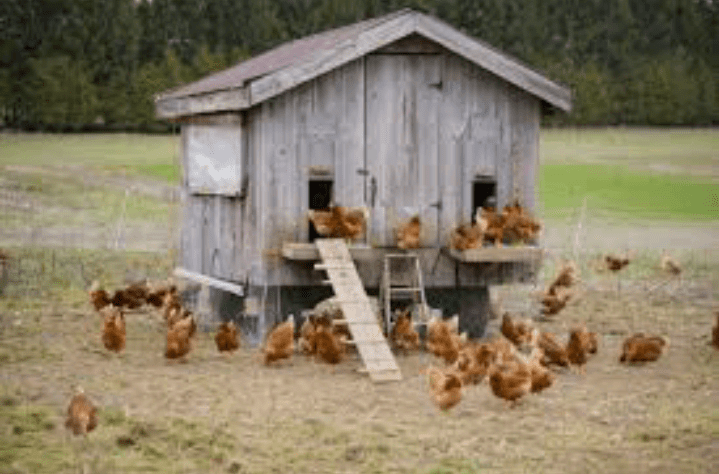Building a DIY chicken coop is an adventure that brings joy and practicality together. Creating a safe and cozy home for your chickens is a fulfilling project that not only ensures their comfort but also provides you with fresh eggs and delightful company.
Whether you’re a seasoned DIY enthusiast or just starting with construction projects, crafting a chicken coop can be a gratifying and manageable endeavor. In this guide, we’ll walk you through the essential steps to design and construct a sturdy, functional, and chicken-friendly coop.
The prospect of constructing a chicken coop might seem daunting at first, but with the right guidance and a little elbow grease, it’s a task that can be achieved with ease. As we delve into the various stages, we’ll cover the fundamental aspects of planning, designing, and building a coop that caters to the needs of your flock.
From selecting the appropriate location to sketching the blueprint and gathering materials, we’ll simplify each step of the process. We’ll explore the importance of size, adequate ventilation, nesting areas, and the significance of security measures to safeguard your chickens from potential threats.
Remember, this guide aims to make the process clear and accessible, offering tips and tricks to ensure the coop is not only functional but also a delightful space for your chickens to thrive. Let’s embark on this exciting journey of constructing a chicken coop that will be a welcoming haven for your feathered companions.
Read Also: DIY Greenhouse : A Comprehensive Guide
DIY Chicken Coop

I. Planning Your Chicken Coop
1. Understanding the Basics: Before you dive into the construction process, it’s crucial to understand the fundamental requirements for a chicken coop. The coop needs to offer protection from predators, weather elements, sufficient space for roosting, nesting, and enough ventilation for air circulation.
2. Coop Size and Location: Determining the size of your coop depends on the number of chickens you intend to house. A general rule of thumb is to provide at least 2-3 square feet per chicken inside the coop and 8-10 square feet in the outdoor run area.
Select a location that offers ample sunlight, is well-drained, and is safe from potential predators. Ensure the coop is easily accessible for cleaning and maintenance.
II. Design and Construction
1. Sketching the Blueprint: Begin by sketching a blueprint or layout plan for your coop. This plan should include the coop’s dimensions, roosting areas, nesting boxes, ventilation systems, and the outdoor run.
2. Gathering Materials: Selecting the right materials is vital for the durability and longevity of your coop. Common materials include lumber, hardware cloth, screws, nails, roofing material, and paint or sealant for weatherproofing.
3. Building the Frame: Construct the base and frame of the coop using the lumber. Ensure the frame is sturdy and level to provide a solid foundation for the rest of the coop.
4. Adding Ventilation and Insulation: Ventilation is essential for air circulation, which helps in regulating temperature and preventing moisture buildup. Install vents or windows that can be opened and closed as needed. Insulating the coop is crucial, especially in areas with extreme weather conditions.
5. Nesting Boxes and Roosts: Design and install nesting boxes for your chickens to lay eggs comfortably. Provide one nesting box for every 3-4 hens. Additionally, add roosting bars for chickens to perch on while sleeping.
6. Flooring and Bedding: For the coop’s flooring, consider materials that are easy to clean and maintain, such as linoleum or wooden slats. Use appropriate bedding material, like straw or wood shavings, which can be regularly changed to maintain cleanliness.
Read Also: Top Finance Companies to Get a Loan – Mariner Finance, Nissan Finance, Snap Finance, etc.
III. Finishing Touches
1. Security Measures: Implement adequate security measures to safeguard your chickens from predators. This can include burying wire mesh around the coop’s perimeter to prevent digging and ensuring all entry points are secure.
2. Painting and Weatherproofing: Apply a weatherproof sealant or paint to the coop to protect it from the elements. Choose non-toxic paints for the chickens’ safety.
3. Access Doors and Maintenance: Install doors that provide easy access for cleaning, egg collection, and maintenance. Consider adding sliding doors for the chickens to enter and exit the coop during the day.
IV. Maintenance and Upkeep
Regular maintenance is key to ensuring a healthy and productive environment for your chickens.
1. Cleaning Schedule: Establish a routine for cleaning the coop to prevent the buildup of waste and bacteria. This may include daily removal of droppings, weekly changing of bedding, and a thorough cleaning a few times a year.
2. Health Checkups: Regularly inspect your chickens for any signs of illness and keep an eye out for parasites. Additionally, ensure they have a balanced diet and access to fresh water at all times.
3. Structural Maintenance: Inspect the coop periodically for wear and tear. Replace any damaged parts, repaint when necessary, and reinforce areas that might need extra support.
Read Also: Everything You Need to Know About Trash Pickup in Philadelphia
